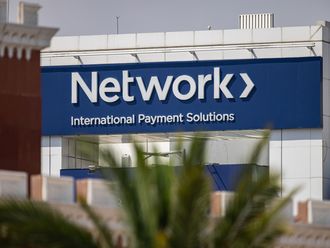Trade plays a significant role in Gulf Cooperation Council (GCC) and Asian economies, even excluding China and India. According to the World Bank, exports as a percentage of GDP stand over 65 per cent for both GCC and south-east Asian (SE Asia) countries.
The GCC is an export-surplus region, with total exports accounting for nearly 77 per cent of its total trade with SE Asia. In terms of trade, the UAE and Saudi Arabia are the most active countries in the GCC together carrying out 75 per cent of total trade (exports and imports).
Some of the well-established trade connectivity routes for exports from the GCC to SE Asia are the UAE–Thailand route with exports worth $17.3 billion (Dh63.5 billion), the UAE–Singapore route ($16.5 billion), the Saudi Arabia–Singapore route ($12.9 billion), the Saudi Arabia–Thailand route ($8.4 billion) and the Qatar–Singapore route ($7.9 billion).
Considering the large mutual benefits in offer for each other, GCC and south-east Asian countries have also been carrying out heavy bilateral investments. Some Gulf-based businesses already have investments in or trade ties with south-east Asian countries.
For instance Mubadala Development, an investment company owned by the Abu Dhabi Government, signed a partnership in October 2010 to develop an aluminium project in Malaysia. Furthermore, Mubadala Aerospace is targeting opportunities in Malaysia and other Asia-Pacific countries as part of plans to broaden its global footprint.
Leveraging on areas of potential
GCC and south-east Asian countries have also entered into various agreements to explore and leverage on areas of huge potential in trade and investment. In 2012, the GCC and Malaysia entered into the Framework Agreement on Economic, Commercial, Investment and Technical Cooperation (FAECITC), a bilateral agreement to further strengthen economic relations, improve business environment, increase bilateral trade through the removal/reduction of import duties and legal commitments.
Another noteworthy pact which came into effect early this year was the free trade agreement (FTA) between Singapore and the GCC.
However, currently there are only a few FTAs established between the GCC and the SE Asia. Countries such as Indonesia, Vietnam and the Philippines, to a greater extent, have remained aloof from such linkages. Furthermore, the Philippines and Vietnam together account for $13 billion or a mere 10 per cent of the total trade with the GCC.
Establishing FTAs will offer a more concrete business environment for investment and trade opportunities, enhance exchange of information on foreign trade, facilitate business communication and training and technology transfer
Establishing robust trade ties could prove to be a win-win situation for the GCC as well as south-east Asia. According to EIU, Asia will soon become the most important trade region for the GCC. As per an EIU forecast, oil consumption in Asia is likely to grow on an average pace of 4.4 per cent per annum over the next five years, while the OECD’s demand is expected to flatten.
Furthermore, rising consumption in Asia, backed partly by an expanding middle class, will generate a host of new opportunities for trade. A large population base and a relative shortage of capital in SE Asia provide an ideal opportunity for the GCC to fill the gap.
Tourism factor
On the other hand, the GCC holds a high demand for machinery & equipment, telecoms and sound recording equipment, general industrial materials, electrical machinery, non-metallic minerals and predominately food products. According to an EIU report ‘The GCC in 2020: Resources for the future’, GCC spending on food imports will more than double by 2020.
Tourism, which remains one of the GCC’s competitive strengths, is already benefiting from the growing Asian middle class.
Islamic finance has grown rapidly over the last few years in both the GCC and Asia. While the GCC is still a major global hub for Islamic financing, Malaysia has developed into the largest sukuk market in the world. Given the common demographic pattern, the two regions have developed an increased interdependence of sukuk markets. Backed by these, a large number of Gulf private sectors have expressed interests in the south-east Asia’s real estate and finance industry.
The growth in trade activities, particularly with Malaysia, would further prompt the need for Islamic banking. Some of the well-known GCC financial institutions — such as Al-Rajhi Bank and Kuwait Finance House — have already established footholds in SE Asia.
Diversification
Furthermore, while the relationship between the two regions is expected to remain largely connected by hydrocarbons for quite some time, there are several other sectors which hold growth potential — most notably in construction, remittances and metals as GCC countries look to diversify their economies away from oil.
The UAE, Qatar, Saudi Arabia and Oman have extensive plans to bolster aluminium and steel production.
The success of the current and future trade and investment flows between the GCC and south-east Asia will greatly depend on a combination of mutual reforms and agreements. South-east Asia could offer the GCC better access to its rapidly growing markets not only for energy, but also other sectors such as telecommunications and Islamic finance while concurrently, the GCC could nurture the growing interest from south-east Asian investors in the GCC region’s hydrocarbon sector.
Significantly for the GCC markets, it further opens up a viable and lucrative avenue of revenue diversification. With similar characteristics, asset pricing and growth trajectories, the synergistic potential for both trade zones remains hugely enticing and should be a core focus for future investors and public and private players.
Credit: Writer is the Founder and CEO, Al Masah Capital Management Limited










